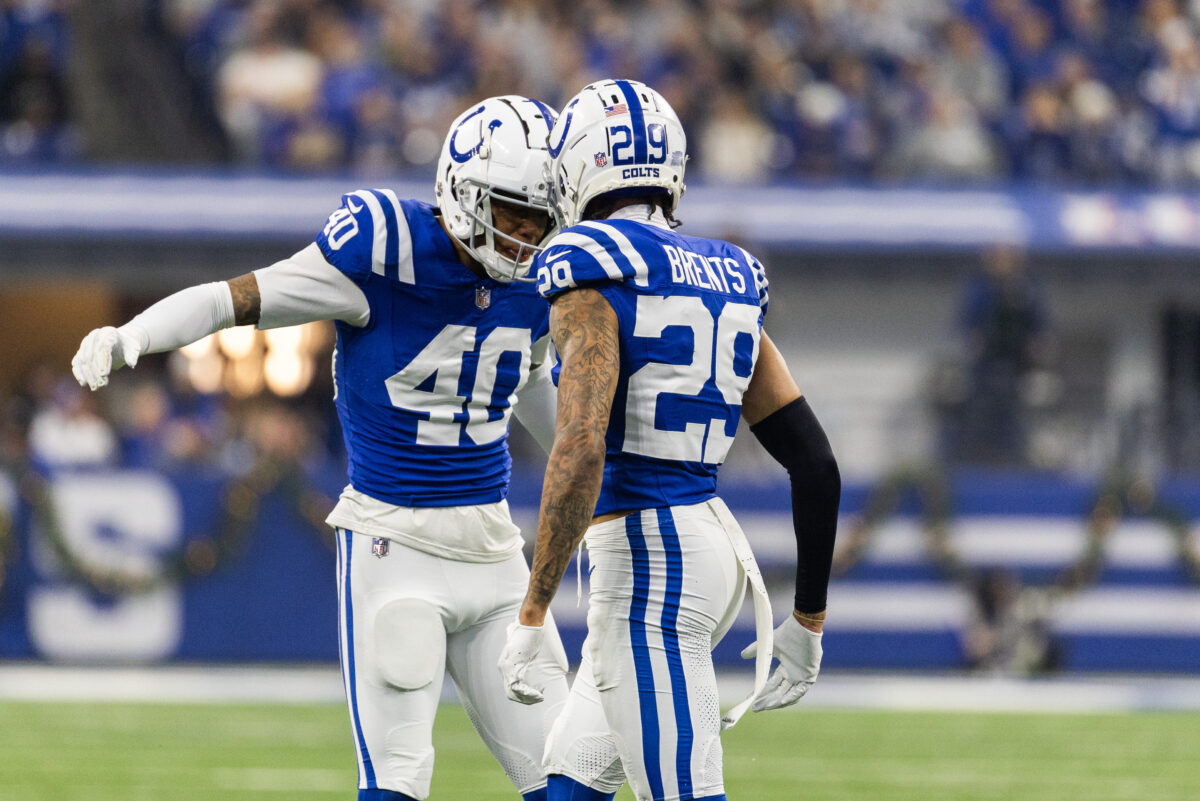During his season-ending press conference back in January, Colts GM Chris Ballard acknowledged that he put defensive coordinator Gus Bradley in a difficult spot having to rely heavily on so many young players in the secondary.
However, even with that being the case, and the performance from that group often reflecting that, Ballard didn’t make any outside additions to improve his safety or cornerback rooms during free agency.
In part, doing that is dependent upon who is available, what other teams are interested, the contract, and other factors. But, as Ballard acknowledged when meeting with reporters on Friday, those young players in the secondary are no longer rookies, and a jump in 2024 is the expectation from this group.
[affiliatewidget_smgtolocal]
“I think getting Dallis Flowers back will help,” said Ballard. “I think, looking back on it, when I made that statement, the injury part of it played into it, and then we gave him a bunch of rookies. Well now, they’re no longer rookies anymore. Jaylon Jones is no longer a rookie. JuJu (Brents) is no longer a rookie. Dallis Flowers we’re hoping to get back healthy. We got back Kenny (Moore) back in the mix. I think anybody within in the grand scheme of things would tell you that he’s one of the top nickels in the league.
“It’s not like these guys don’t have enough talent. Do we want to add some more? Of course. We always want to add competition. What we did was we gave him a bunch of young players without a vet presence back there other than Kenny and Julian (Blackmon).”
Last season in the secondary, the Colts relied heavily on Brents, a 2023 second-round pick who also dealt with injuries, along with Jones, a seventh-round pick last April. Darrell Baker, a 2022 undrafted rookie, would end up playing 469 defensive snaps, while at safety Nick Cross, who played only 122 snaps as a rookie in 2022, took on a larger role.
The results, as we all saw and Ballard has referred to, were up and down — at best. Explosive pass plays were an issue in 2023, with the Colts ranking in the bottom half of the NFL in big pass plays surrendered.
As a unit, the Colts ranked 22nd in yards per pass attempt allowed and 22nd in pass breakups. During the final four games of the season, with the Colts battling for a playoff spot, the 68 percent completion rate given up ranked 30th during that span.
In other key metrics, like interceptions forced, completion rate allowed for the season and passer rating, the Colts were around the middle of the pack. So it’s not as if it was all bad by any means, but overall, they remained wildly inconsistent, which is to be expected when relying heavily on young players.
“No. Not anymore,” said Ballard when asked if the secondary was too young. ”I think they’ve grown up. It’s been fun to watch them. Once you play 16-17 games in this league, you’ve grown up to the fact where you’re no longer a rookie. So I think we’ll see better play out of them.”
It’s for these reasons that every draft analyst out there has cornerback as a top priority for the Colts to address next week. While Ballard’s hope and expectations are that things improve in 2024, that’s not a given either, and relying solely on that to happen comes with obvious risks.
The good news is that this draft is considered to be fairly strong at the cornerback position. A strong draft class on the offensive side of the ball could push top cornerback options Quinyon Mitchell or Terrion Arnold down to the Colts at No. 15.
Other first-round options — perhaps not at 15th overall — include Nate Wiggins, Kool-Aid McKinstry and Cooper DeJean.
With that said, if Ballard does feel strongly about the young defensive backs already on the roster making a leap, then perhaps he doesn’t feel the same urgency as some on the outside to address cornerback right away, which would then free him up to prioritize adding a playmaking presence on offense instead — another big need.
Competition is an important factor when it comes to seeing improved play, and as Ballard mentioned, it is something they are always looking to add. So it’s not a matter of whether the Colts add a defensive back, but more so a question of when.
Regardless of how it happens — a jump by young players on the roster or an infusion of talent through the draft — the play on the back end of the Colts’ defense has to improve.
“It’s kind of like the (expletive)-whipping y’all gave the O-line two years ago,” Ballard said, comparing the criticism to his cornerback room. “Y’all just (said), ‘The O-line sucks. They can’t play.’ I kept going, ‘Man, the second half of the season, I didn’t think it was that bad.’ There were some individual moments, of course, but I thought they got better as they played.”
